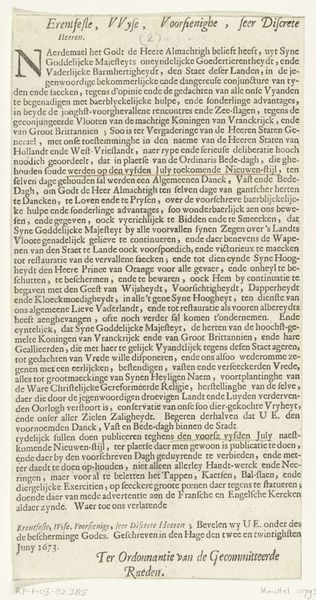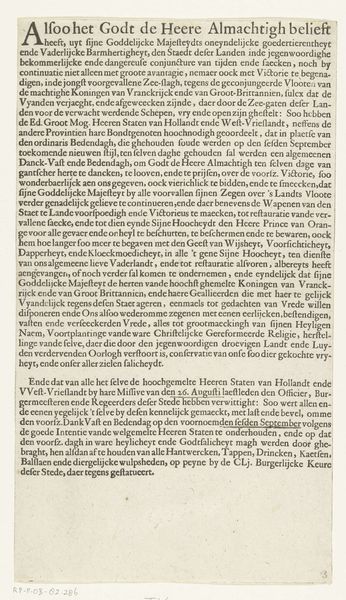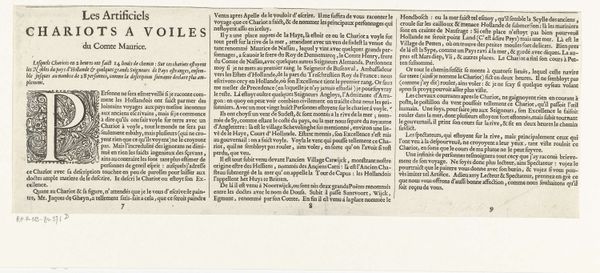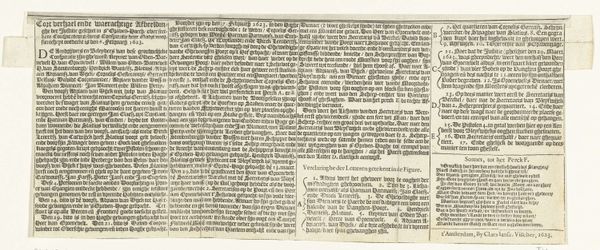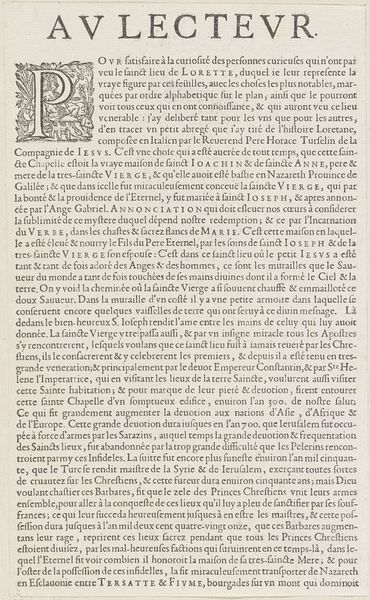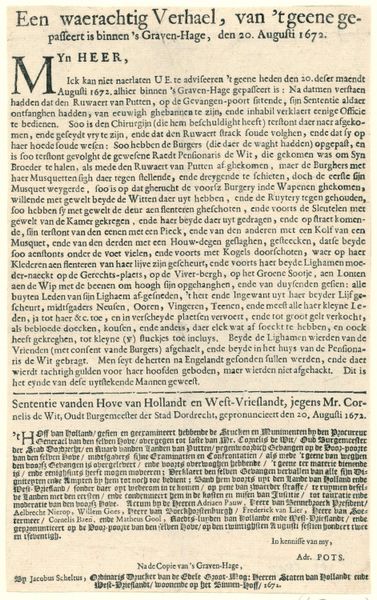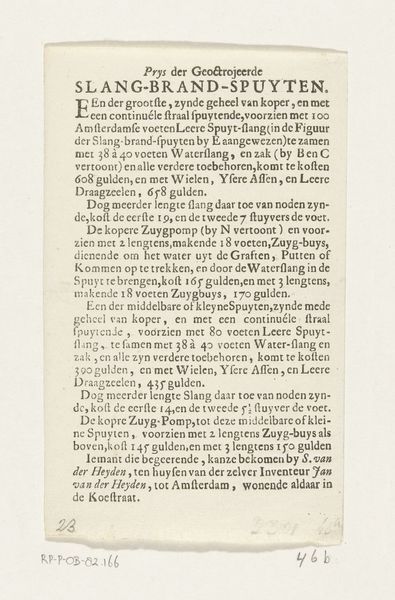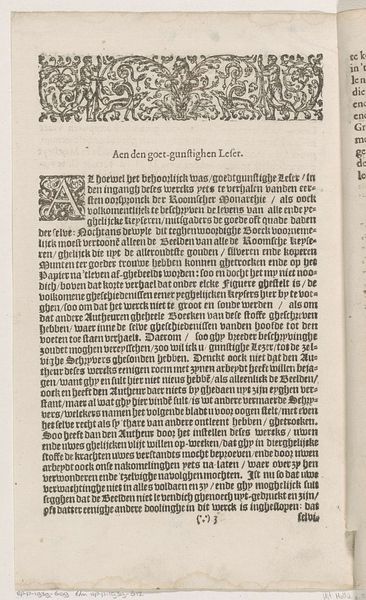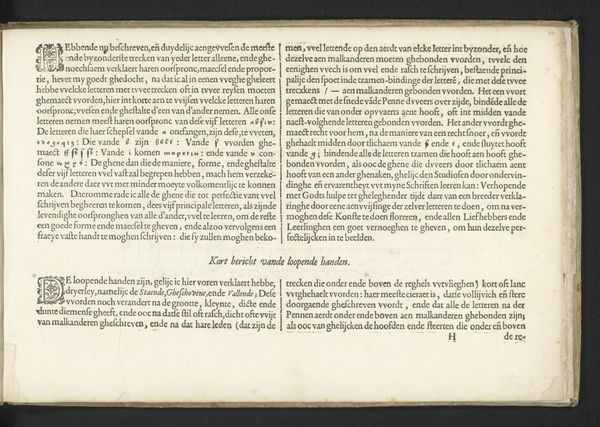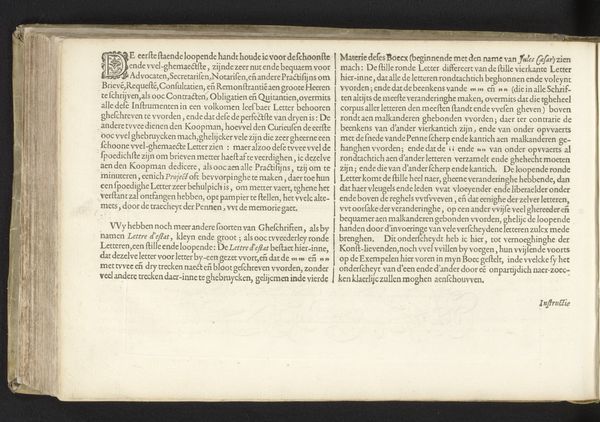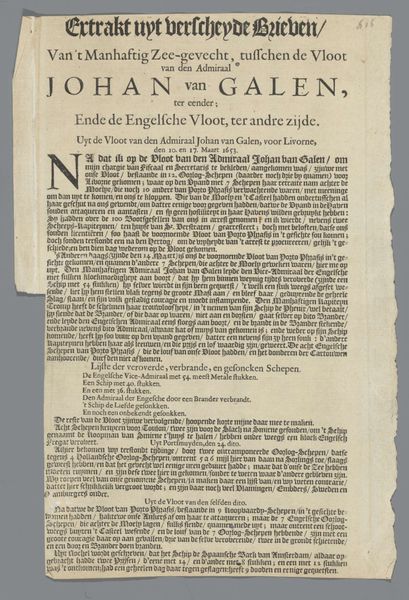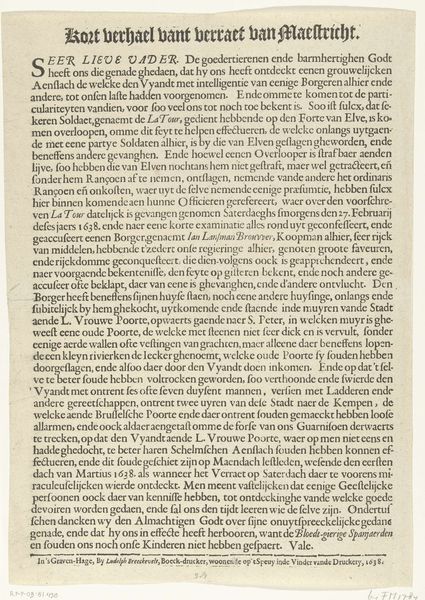
Toelichting van de werking van de zeilwagen van Simon Stevin, 1602 1603 - 1652
0:00
0:00
drawing, print, textile, engraving
#
drawing
#
dutch-golden-age
# print
#
textile
#
engraving
Dimensions: height 133 mm, width 360 mm
Copyright: Rijks Museum: Open Domain
Curator: Ah, this print immediately sparks my imagination. It feels like an ancient document, promising secrets about a fantastical machine. Editor: Yes, it’s titled "Explanation of the workings of Simon Stevin's wind chariot, 1602.” Created between 1603 and 1652, this engraving, attributed to Christoffel van Sichem I, currently resides in the Rijksmuseum collection. You're drawn in by the lettering at the start, aren't you? Curator: Absolutely! That elaborate initial "S" feels like the entrance to a story. The overall texture, though – the density of text, and how it almost overwhelms the depiction of the chariot itself– makes me wonder about the priorities here. It’s as if the idea of the chariot is more important than its literal appearance. Editor: That's a shrewd observation. Keep in mind the historical context. The Dutch Golden Age was characterized by a surge of scientific exploration. This image isn’t simply about art. It's also an effort to document a novel piece of technology. These vehicles had sails that would travel on beaches by wind power alone. Curator: So, the text provides both practical information and a kind of symbolic weight. The chariot becomes a representation of Dutch ingenuity and ambition? Editor: Precisely. The social and political implications are hard to ignore. Prince Maurits even appears, and with other dignitaries, testing out the vehicles. Curator: The visual symbolism is definitely intriguing here, blending practical science with aspirations of progress. And now I think that textual density makes sense! It's an overwhelming surge of text describing overwhelming ambitions, contained within a single print. Editor: Yes, a potent display of technology as status. And so it offers layers of context, technological promise, a record of the elite using science, all presented to a public eager to claim its part in history. Curator: Looking at it again with that in mind, I see that intertwining of aspiration and practicality very clearly. It’s more than just an explanation; it's a visual embodiment of early modern ambitions. Editor: I completely agree; the print captures the unique spirit of its era, straddling the line between technological manual and symbol of power. A unique relic of a particular moment.
Comments
No comments
Be the first to comment and join the conversation on the ultimate creative platform.
